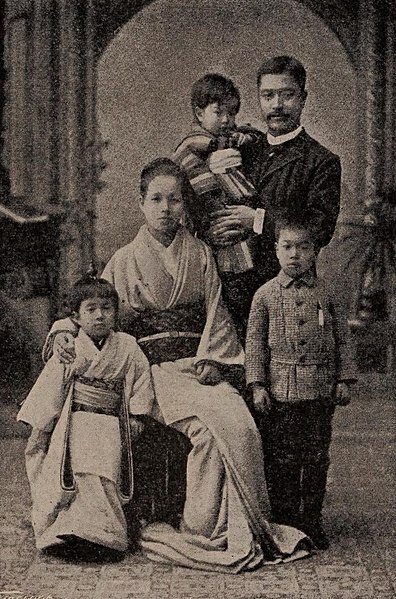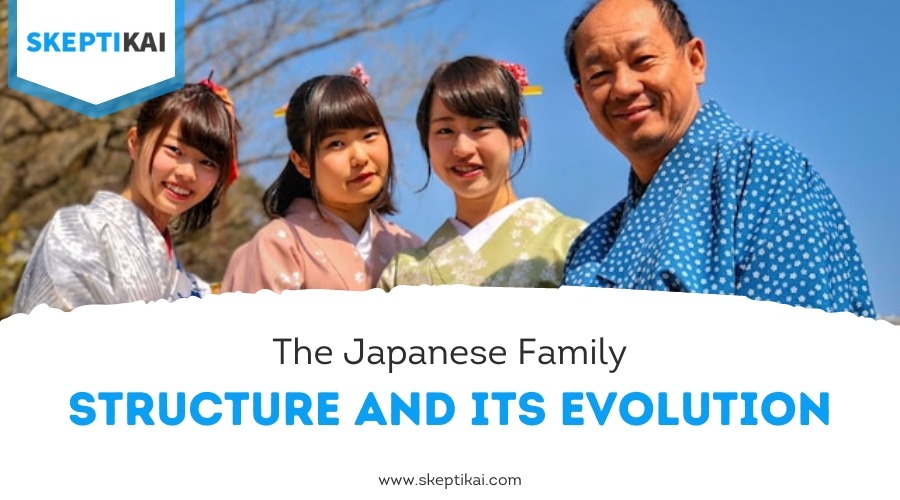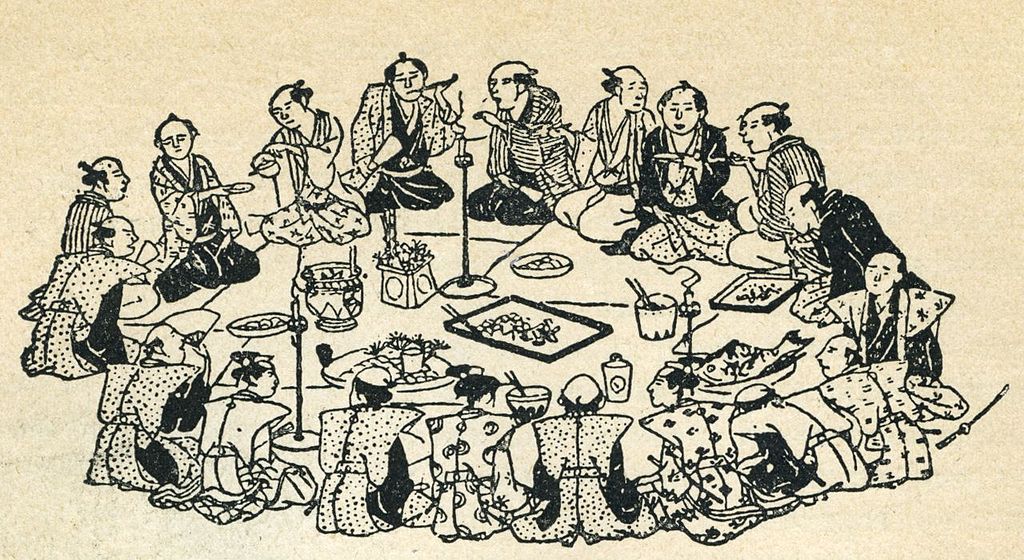Have you ever considered how the evolving Japanese family structure mirrors broader societal changes? You’re not alone.
The transition from extended to nuclear families underscores shifts in economic conditions, societal norms, and personal values. While ancestor worship and the maintenance of family names through adoption of non-blood relatives once cemented family ties, modern challenges such as declining birth rates and high housing costs are reshaping these traditions.
As you explore the intricate dynamics of gender roles, marriage, and future challenges, you’ll uncover how these elements are interwoven with Japan’s cultural identity and its path forward.
Historical Foundations

How did the historical roots of the Japanese family structure, dating back to the late 19th century, shape today’s societal norms and family dynamics? The late nineteenth century marked a pivotal period for Japan, especially during the Meiji era, when state formation underwent significant changes. This era laid the groundwork for the evolution of the family in Japanese society.
Back then, the emphasis was on women’s education, but with a twist. Women were primarily educated for domestic roles, a move that deeply influenced the foundation of family dynamics. You’d see the impact of this approach in how families operated and how society perceived women’s roles within the household. It wasn’t just about learning; it was about preparing women to fit into a mold that society deemed appropriate.
As Japan navigated through societal changes and witnessed economic growth, especially in the 1960s, the structure of the family began to transform. New family forms emerged, reflecting the country’s evolving economic landscape. The focus on women’s education continued, but the reasons shifted. Now, it wasn’t just about preparing for domestic roles but also about enhancing one’s prospects in the marriage market. This shift indicates how deeply intertwined family, societal norms, and economic growth are in shaping the Japanese family structure.
Modern Transformations
Building on the historical foundations of the Meiji era, modern transformations in Japanese family structure reflect significant societal shifts, including changing attitudes towards marriage, work, and lifestyle choices. You’re witnessing a dynamic era where the Japanese family system is undergoing profound changes, driven by:
- An increasing number of women marrying later, leading to a decline in Japan’s birth rate.
- A notable rise in extramarital sexual activity becoming more accepted within society.
- Divorce rates in Japan escalating from 1.26 per 1,000 in 1988 to 2.00 per 1,000 by the end of the 1990s.
- Young people challenging traditional expectations through consumerism and alternative lifestyles, seeking flexibility in work and family arrangements.
These modern transformations signify a move away from the extended family model towards more nuclear or even single-person households. The shift indicates a society grappling with balancing traditional expectations against the realities of modern life. As women gain more autonomy and the workplace evolves to accommodate more flexibility, the Japanese family system continues to adapt, reflecting broader global trends while maintaining unique cultural nuances.
The changes aren’t just about demographic shifts but a fundamental rethinking of marriage, work, and family life in Japan.
Gender and Roles
In recent years, the evolution of gender roles in Japan has significantly impacted family structures and societal norms. About half of Japanese women are now part of the workforce, reflecting a shift from traditional norms that once confined them to domestic roles. This change, while progressive, introduces challenges, particularly for those reentering the workforce. Their career trajectories are often fraught with obstacles, underscoring the need for systemic support.
Single mothers in Japan face unique hardships, balancing work and childcare, a struggle that positions Japan with the highest number of single mothers in the OECD. This demographic’s challenges highlight the complexities in evolving family dynamics and societal expectations.
| Aspect | Challenges | Impact on Family Dynamics |
|---|---|---|
| Workforce Reentry | Significant barriers for women | Alters traditional family roles |
| Single Mothers | Balancing work and childcare | Strains on family support systems |
| Societal Expectations | Evolving norms around gender roles | Shifts in family structure and roles |
These developments illustrate the nuanced interplay between gender roles, workforce participation, and family dynamics in Japan, urging a reevaluation of societal expectations to foster a more inclusive environment for all family models.
Marriage Dynamics
Reflecting on how gender roles and societal norms have evolved, it’s crucial to examine the changing dynamics of marriage within Japanese culture. Marriage, as a foundational element of society, has seen shifts that mirror broader societal changes. You’ll notice:
- The average marriage age has crept up to the late twenties and early thirties, a clear trend towards postponing this significant life event.
- Legal regulations governing marriage underscore its status as a formal institution, with strict procedures that emphasize its importance.
- Despite evolving societal norms, the lack of legal recognition for same-sex marriage highlights persistent traditional views.
- The importance of family and community approval in marriages underscores the weight of societal norms in personal decisions.
These points reveal a complex interplay between traditional values and modern realities. Legal regulations and societal norms continue to shape the landscape of marriage in Japan, from the age at which people marry to the evolving attitudes towards divorce.
Marriage laws, while adapting, still reflect a degree of conservativism, especially in relation to global trends towards greater inclusivity. Understanding these dynamics offers a window into the broader shifts within Japanese family structures and societal expectations.
Future Challenges
Japan faces significant challenges ahead as declining birth rates and high housing costs reshape traditional family structures. You’ll see the shift towards nuclear family living arrangements, putting pressure on the age-old multi-generational family setup. This evolution isn’t without its hurdles. Generational conflicts within these three-generation households are becoming more frequent, undermining the harmony and stability that once defined traditional family dynamics.
Modern values, with a strong emphasis on independence, are further straining the fabric of Japanese family life. These values often clash with the expectations of living in multi-generational households, leading to tensions and a drift away from collective family practices. Even more telling is the trend of renting actors to fill the roles of family members, underscoring a deep-seated nostalgia and the longing for a past that harmonized with traditional family dynamics.
The average number of children per family is dropping, challenging the continuation of extended family structures and posing significant challenges to family continuity. As these evolving dynamics unfold, you’re witnessing a profound transformation in what family means in Japan, setting the stage for a future where traditional and modern values must find a new balance.
Conclusion
In conclusion, you’ve seen how the Japanese family structure has evolved from extended familial systems to more nuclear setups, influenced by societal and economic shifts. Traditional roles and marriage dynamics have transformed, reflecting changing gender norms and values toward independence.
With challenges like declining birth rates and high housing costs ahead, it’s crucial for Japan to adapt while preserving cultural heritage. The future of Japanese families hinges on balancing tradition with the realities of modern life.



